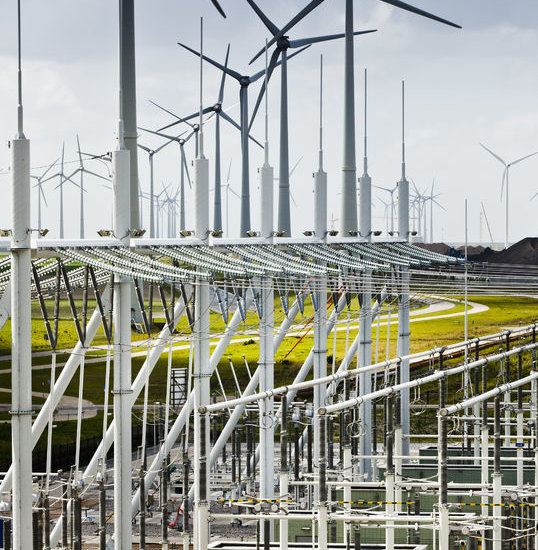Massive InteGRATion of Power Electronic Devices
Our future energy supply will come from various sources located at smaller or greater distances from consumer centres. These will be connected at different voltage levels and increasingly with the help of various power electronic converter technologies. This entails a fundamental change in the structure and topology of the generation, transmission and distribution of electric power systems. Project MIGRATE takes a look ahead to the year 2040 and identifies major operational challenges for such a system.
Conventional power systems have a unique characteristic the large mass of conventional generators creates system inertia. In case of faults, large system inertia prevents the quick acceleration of the generators and gives more time for the protection to eliminate the fault. In the future, a great amount of conventional power production will be replaced by renewable resources, e.g. wind and solar power This means that more power electronics will be applied to connect these renewable sources to the system, convert DC to AC and vice versa, as well as control voltage and frequency variations for various power sources. Because of the low mass of wind generators, future power systems will have lower inertia levels. For over a hundred years we have been depending on system inertia for a stable system and a secure power supply Now, we need to completely rethink our protection and control strategies. This is even more complex because we have to resolve this while the system is in transition, with variable renewable resources being integrated, and conventional ones decommissioned.
RESEARCH
Reliable fault detection and protection algorithms are an important subject of this project. Current protection schemes are designed for one-directional currents. With a high penetration of renewable energy such as local solar power generation, fault currents become bi-directional. Besides, with lower amplitudes, fault currents will be harder to distinguish from normal load currents. Furthermore, as generators will have low inertia, the critical clearing time (which is a measure for losing synchronism) may significantly decrease. Therefore, faults should be removed more quickly.
For a large part, the research is fundamental, as we are trying to understand how a whole new kind of inverter-based system can be monitored, controlled and protected. This involves the development of novel research approaches and methodologies From a practical point of view, proposed solutions cannot always be implemented immediately. Therefore, investigating how far existing technologies and regulations can contribute to risk assessment and system security is also part of the project. This will result in recommendations to European Transmission System Operators.
PARTNERS
MIGRATE has 27 partners which include twelve universities, three companies (Alstom, Enercon, Schneider Electric) and twelve European TSOs. TenneT is the project coordinator The project name is derived from the research topic "Massive InteGRATion of power Electronic devices". MIGRATE forms part of the EU's Horizon2020 framework programme for research and innovation.
More information about the protection part of Migrate can be found HERE.
An energy system in transition is like flying in an airplane whilst changing components during the flight and still keeping the airplane up in the air
Mart van der Meijden
